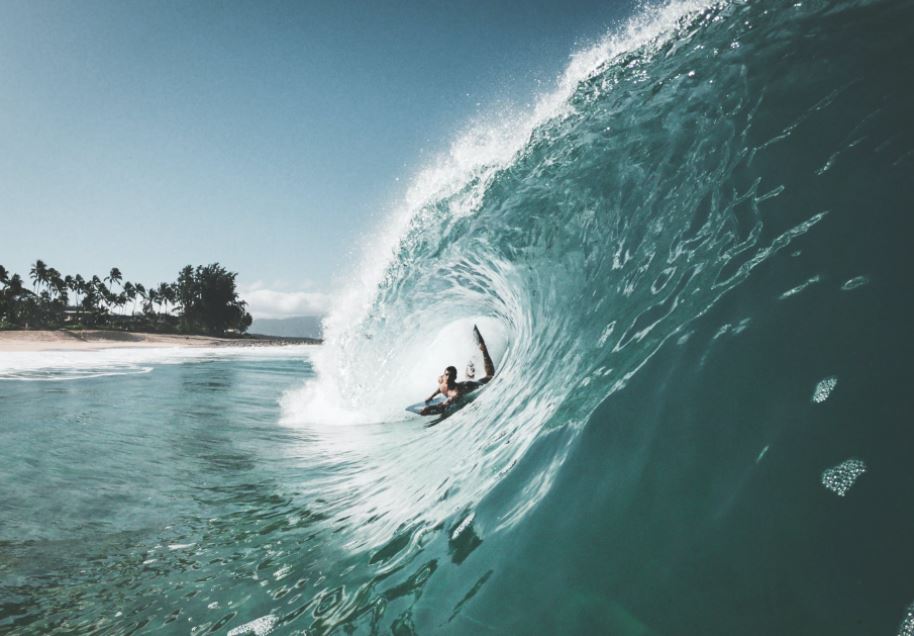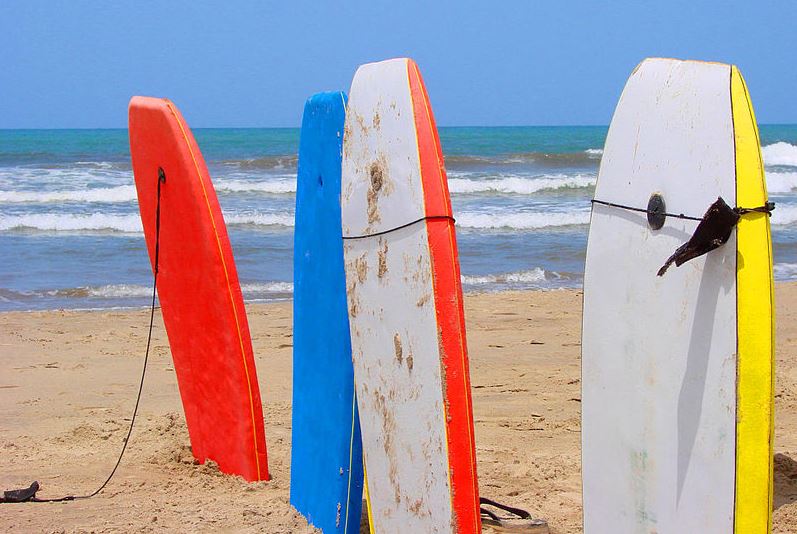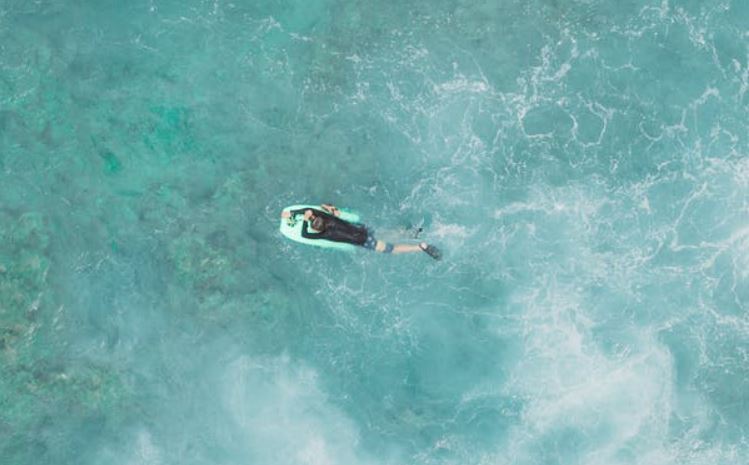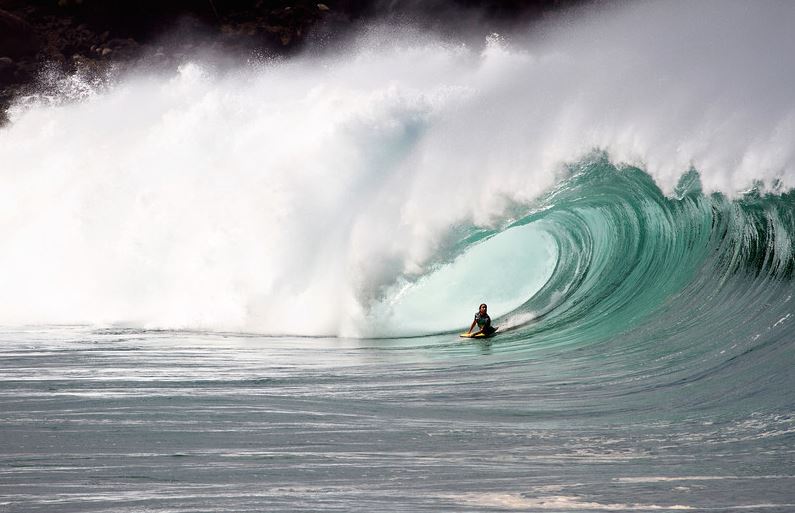If you’re looking to get into bodyboarding or consider replacing your current board, you’ve reached the right place! Choosing the right board size is critical if you are serious about improving in the sport or merely want to have the most fun when riding the crest of a wave.
Each board offers a distinct performance and is available in various sizes and shapes with distinct features. Selecting a board based solely on appearances will almost always result in the wrong size, reducing the amount of fun you have in the surf. You must consider a variety of design elements.
Look over everything you need to consider before selecting the best bodyboard for adults.
Bodyboard Size
Choosing your first board as a beginner may appear to be difficult, but the most important factor to consider before the style is your board’s size. A size that is too small will prevent you from getting the most out of your board and may leave you disappointed on your first excursion on the waves with new gear.
You can find more info on how to get fitted in our sizing guide section.
Size Guide for Bodyboards
The sizing chart below provides more thorough bodyboard sizing guidelines by taking weight and height into account. Although this chart is useful, it ultimately boils down to the rider’s preference.
| Board Length (inches) | Rider Height (ft.’ & in.”) | Rider Weight (lbs) |
| 32″ – 34″ | Under 4′ | 40 – 64 |
| 36″ – 38″ | 4′ – 5′ | 65 – 85 |
| 39″ | 4’6″ – 5’2″ | 86 – 115 |
| 40″ | 5’3″ – 5″6″ | 110 – 130 |
| 41″ – 41.75″ | 5’7″ – 5’9″ | 125 – 170 |
| 42″ | 5’9″ – 6’0″ | 145 – 180 |
| 42.5″ | 5’10” – 6’2″ | 160 – 190 |
| 43″ | 6’1″ – 6’3″ | 170 – 210 |
| 44″ | 6’2″ – 6’4″ | 180 – 270 |
| 45″ | 6’3″ – 6’6″ | 195 – 255 |
| 46″ | 6’4″ and above | 220 and above |
Which Bodyboard Size Should I Get?
A bodyboard that does not fit you is similar to a boat with no rudder – it is useless. If the board is too long, you won’t be able to paddle effectively, and the board will be hard to control because it will interfere with your legs. If the board is too short, it will create the drag, making it tough to catch and sit on the wave.
You should also consider weight because it affects the size of the board and the materials utilized (e.g., a more buoyant core material). However, you should note that what works for one rider may not work for another!
There are two quick ways to determine what size bodyboard is best for you:
- Select a bodyboard that is the same height as your belly button when standing upright on the ground.
- The bodyboard should reach from the knees to your chin when held out in front of you.
Additional Factors to Consider When Choosing a Bodyboard Size
The Wave Type
The bodyboard you choose for more advanced riders will also vary with the size of the waves you’re inclined to ride.
Small Wave Rider: If you plan to ride small waves, a longer board will provide more stability and buoyancy in the water.
Large Wave Rider: You should go with a shorter bodyboard if you’ve been primarily riding big waves. Because more of your body is submerged in water with a smaller bodyboard, you will have more agility and control.
Riding Style
Stand-up and drop-knee riders should choose a longer board if they want to be more daring than the typical prone riding position, but this is entirely up to the rider!
Choosing the Best Bodyboard
Board Length
When standing on the floor, the board must reach your belly button. In general, base your decision on the following suggestions and general guidelines:
- If most of the waves you catch are mushy, small, and slow-breaking, get a larger board than what’s indicated by the size chart.
- If most of the waves you catch are big, hollow, powerful, steep, and fast, buy a larger board than indicated by the size chart.
- Get a slightly larger board if you enjoy stand-up or drop-knee bodyboarding.
- Ideally, your quiver should include a smaller boogie board for big waves and a standard-sized bodyboard for average-sized days.
A Bodyboard’s Anatomy
It is critical to understand the essential parts after carefully selecting the appropriate size. Learn more about these with this guide to bodyboards!
Board Core
Bodyboards are now made from three primary core materials: polypropylene foam (PP), dow polyethylene foam (PE), and extruded polystyrene (EPS).
Dow polyethylene-based bodyboards provide excellent projection, flexibility, and all-around performance in cold water. Warm water softens and increases the flex of a PE bodyboard. The presence of a stringer in a dow core obtains a board with good memory and excellent flex properties, or the ability to return to its original shape.
Bodyboards made of polypropylene are stiffer and lighter than those made of polyethylene. When equipped with stringers, however, PP boogie boards may become too rigid for many bodyboarders in cold water.
Bodyboards made of extruded polystyrene have the simplest and cheapest core and are typically found in entry-level models. EPS boards are extremely lightweight, stiff, and water-resistant, lacking full recoil and foam memory. They may crease in extreme surf conditions.
Heavier riders should choose cores that are stiffer and stronger, with at least one stringer.
Stringers
Stringers have been incorporated into modern bodyboards to improve core strength. They run like a spine down the center of the board, providing increasing projection and near-instant recoil.
Stringer-enhanced boards will typically last longer than non-stringer-enhanced boards. High-performance drop-knee boards may have two or three stringers to add strength where the rider needs it the most.
Nonetheless, professional prone bodyboards with multiple stringers are already being sold for riders who indulge in warm water waves and require robust models for their heavy landings.
Stringers can be installed or removed depending on the available wave riding conditions.
Thickness, Width, and Tails
Bodyboard tails are the very last point of exit for water leaving the board’s bottom. The “bat” and “crescent” shapes are the most common in modern bodyboards. Crescent-shaped tails cling to the wave, whereas bat-shaped tails are looser.
Width is also an important factor in bodyboard performance. Wider boards have more buoyancy and are harder to turn. Modern models are slimmer to allow for high-performance turns and maneuvers.
Thickness is also an important factor in bodyboards. The most recent models are slimmer (about 51 millimeters) to improve maneuverability and reaction to quick movements.




